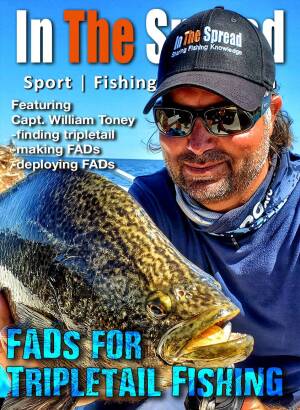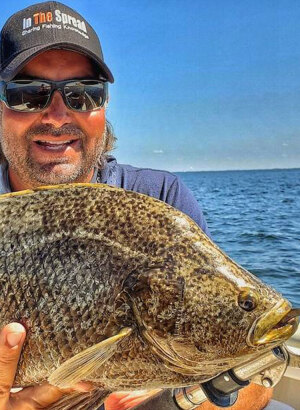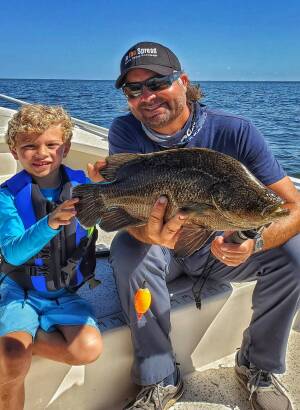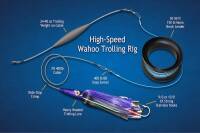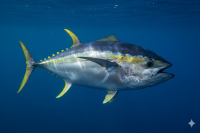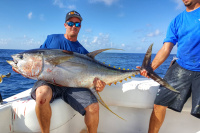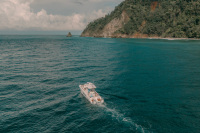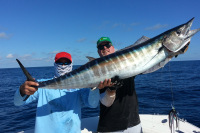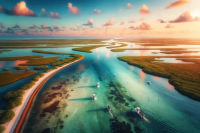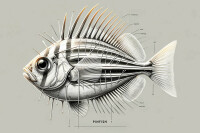Captain William Toney's simple tripletail FAD construction method transforms ordinary materials into productive fish-holding structures. Build your own fish aggregating devices using biodegradable materials and create private Gulf Coast fishing spots that consistently outproduce crowded public areas throughout the season.
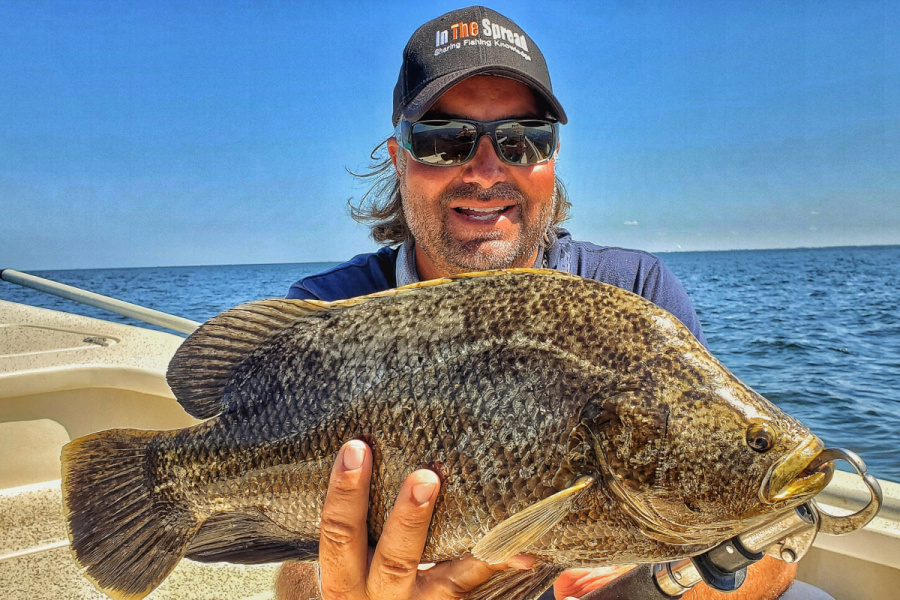
How to Build Tripletail FADs with Captain William Toney
How to Build Tripletail FADs: Your Complete Guide to Fishing Success
It's stone crab season that has me thinking about tripletail FADs again. Without fail, from spring through fall, tripletail are spotted lazing around pilings, channel markers, and crab buoys throughout the Gulf Coast. But here's the thing every seasoned angler knows: after every publicly known object gets hammered multiple times, how many fish are left for you? Not many.
Why Tripletail Are Worth Your Effort
While it may not be widely known to casual anglers, those who spend serious time in inshore waters understand that tripletail rank among the finer eating fish in the sea. The blackfish, as they're also called, have firm white meat that's often compared to grouper or snapper. Being grouped with these two supremely good eating fish puts tripletail in the upper echelon of table fare from inshore waters.
Cooking tripletail requires some finesse since the meat is delicate:
- Pan-searing produces amazing results with the flaky texture
- BBQ works well with skin left on for protection
- Avoid placing fillets directly on the grill like you would with sea trout
- The firm white meat holds up beautifully to various preparation methods
Beyond the dinner table, tripletail put up a damn solid fight when hooked on light tackle. Don't be fooled by their lazy appearance floating listlessly on their sides. These fish move with lightning speed when triggered and will test your gear and skills.
Understanding Tripletail Behavior and Feeding Patterns
The reason tripletail are consistently found around pilings, markers, and buoy lines relates directly to their feeding habits and camouflage strategy. These well-adapted ambush predators have mastered the art of looking like floating debris or clumps of weed, drawing their prey well within striking range.
Tripletail feed on baitfish and crustaceans attracted to algae growing on long-standing structures. It's a curious thing why this fish seems to float motionless on its side, but this behavior serves a critical purpose. Once prey enters their strike zone, tripletail move with explosive speed to secure a meal. This makes them incredibly effective stealthy predators.
Key factors that attract tripletail to structures:
- Longer submersion time equals more algae buildup and sea life
- Grimier objects with established marine growth hold more fish
- Multiple tripletail often inhabit the same productive structure
- Structures with substantial food chains support larger populations
The longer a buoy line or marker has been in the water, the greater the likelihood you'll find multiple fish around it. Pilings, markers, and buoy lines that have been submerged for extended periods attract more sea life and build hardier food chains that sustain tripletail populations.
The Secret to Consistent Success: Building DIY FADs
This affinity for floating objects makes tripletail perfect targets for sight fishing. As you motor past an object, you scan for fish and cast if you spot any. Sounds simple, right? The challenge comes when every angler in the area knows the same spots you do.
Building your own tripletail FADs offers the ultimate solution for escaping crowded public spots and controlling your fishing success. One way—perhaps the best way—to ensure plenty of access to this amazing fish is to construct and deploy your own fish aggregating devices.
You can build FADs using any number of methods, but Captain William Toney's approach stands out for its simplicity and effectiveness. The key concept involves creating structure that you can anchor to the bottom in the manageable depths common along the Gulf Coast.
Advantages of the Gulf Coast for DIY FADs:
- Depth drops approximately one foot per mile in many areas
- Most nearshore waters remain under ten feet deep
- Manageable depths make deployment and retrieval simple
- Less equipment needed compared to deep-water FAD fishing
The secret to keeping your tripletail FADs hidden from other fishermen involves sinking the entire structure and marking buoy below the water surface at low tide. This stealth approach ensures your investment remains productive while others continue hammering the obvious public spots.

Building Your Tripletail FADs: Materials and Construction
Making tripletail FADs starts with the simple concept of creating fish-holding structure that you can anchor to the bottom. Captain William Toney's method uses biodegradable materials when possible, making the construction both environmentally responsible and effective.
The beauty of this approach lies in its simplicity. You don't need expensive materials or complex construction techniques. Most components can be found at local hardware stores or marine supply shops, making this an accessible project for any serious angler.
Essential materials for basic FAD construction:
- Biodegradable rope and netting when available
- Appropriate anchoring system for Gulf Coast bottoms
- Weighted base materials to ensure stability
- Marking system for GPS location and retrieval
The construction process itself is straightforward enough to complete in your garage or driveway. Captain William Toney demonstrates the entire process in detail, showing how simple materials transform into fish-attracting structures that rival any natural habitat.
Strategic Deployment for Maximum Success
Proper FAD deployment requires attention to timing, location, and stealth tactics that separate successful FAD fishermen from those who waste time and materials. The process begins with choosing optimal deployment conditions and locations.
Deploy your FADs at low tide so you know the correct depth and can ensure the entire structure remains submerged. This timing allows you to properly position the marking system below the surface, keeping your spots secret from passing anglers.
Critical deployment considerations:
- Water depth and bottom composition for secure anchoring
- Current patterns that affect bait movement and fish behavior
- Distance from heavily trafficked fishing areas
- GPS marking for precise relocation without visible markers
Location selection involves balancing accessibility with productivity. You want spots close enough for regular checking but far enough from obvious structure to avoid competition. The goal is creating your own private tripletail fishing grounds that produce consistently throughout the season.
Maximizing Your FAD Investment Over Time
Patience pays massive dividends with DIY tripletail FADs. If you set your FADs in early spring, by the end of summer they should be loaded with life and holding multiple fish. When Captain William Toney and I conducted our experiment, we left a FAD for just one month and found tripletail on it when we returned. Imagine the results after waiting several months for full marine growth development.
The transformation from new structure to productive fish habitat happens gradually but dramatically. Fresh FADs may hold curious fish within days, but established FADs with substantial marine growth become magnets for entire ecosystems.
Timeline for FAD maturation and productivity:
- First month: Initial algae growth and small marine life colonization
- Three months: Substantial growth with regular tripletail presence
- Six months: Fully established ecosystem supporting multiple species
- Full season: Peak productivity with consistent fishing opportunities
Understanding this timeline helps you plan deployment schedules and manage expectations. Early season deployment means peak productivity during prime fishing months, while mid-season placement provides backup spots as public areas get pressured.
Fishing Your FADs for Consistent Results
Approaching your established FADs requires stealth and strategy to avoid spooking fish that may be resting near the surface. Unlike fishing public structure where fish expect regular disturbance, your private FADs may hold relaxed fish that can be easily startled.
The sight-fishing advantage becomes even more pronounced with your own FADs since you know exactly where to look and can approach from optimal angles. Position yourself to cast without running directly over the structure, giving you multiple opportunities before fish become aware of your presence.
Effective FAD fishing techniques:
- Approach from downcurrent to minimize noise and wake disturbance
- Use polarized sunglasses to spot tripletail against varied backgrounds
- Make accurate casts to avoid hanging up on the structure below
- Be prepared for aggressive strikes from ambush-positioned fish
Different times of day and tide conditions affect tripletail behavior around FADs. Early morning and late afternoon often produce the most visible fish, while midday may require more careful observation to spot fish holding deeper in the structure.
Scaling Up Your FAD Operation
The more FADs you want to deploy, the more time and effort you'll need to invest, but the rewards scale accordingly. Just get all your materials organized, load them into your boat, and spend the day assembling and dropping them overboard. This process builds excitement and anticipation while virtually guaranteeing increased tripletail fishing success.
Strategies for multiple FAD deployment:
- Batch construction for efficiency and consistency
- Systematic placement covering different depths and areas
- Rotation schedule for checking and maintaining multiple spots
- Record keeping for tracking productivity and optimal locations
Captain William Toney's approach scales beautifully from single experimental FADs to comprehensive artificial reef systems that support year-round fishing success. The initial investment in time and materials pays dividends throughout multiple seasons.
Maintenance and Long-Term Success
Successful FAD fishing involves more than just deployment and hoping for the best. Regular maintenance, strategic replacement, and seasonal management ensure your investment continues producing year after year.
End-of-season retrieval serves multiple purposes: environmental responsibility, material recovery for next season, and evaluation of what worked best. Some anglers prefer permanent installations in deeper water, while others rotate locations based on seasonal patterns and fishing pressure.
Seasonal FAD management practices:
- Document GPS coordinates and deployment dates for all structures
- Photograph construction details for consistent replacement builds
- Note which designs and locations produced the best results
- Plan next season's improvements based on current season's performance
The beauty of Captain William Toney's simple design lies in its adaptability and proven effectiveness. Whether you're targeting tripletail specifically or building broader inshore fishing opportunities, these FADs deliver consistent results that make the effort worthwhile.
Your Path to Tripletail Success
Building your own tripletail FADs transforms you from someone hoping to find fish around public structure to an angler who creates fishing opportunities. This shift from reactive to proactive fishing makes all the difference in consistent success.
Captain William Toney's proven methods remove the guesswork from DIY fish aggregating devices while keeping the process simple enough for any angler to master. The combination of effective design, strategic deployment, and patient development creates fishing opportunities that rival the best natural structure.
Login
to leave a review.
User Reviews
There are no reviews yet.Complete Dredge Pulley Setup Guide
Saltwater
12.28.2020
High Speed Wahoo Trolling Rig
Saltwater
09.07.2018
Best Bait for Wahoo
Saltwater
12.30.2023
Pinfish - A Comprehensive Guide
Saltwater
11.10.2023
0

